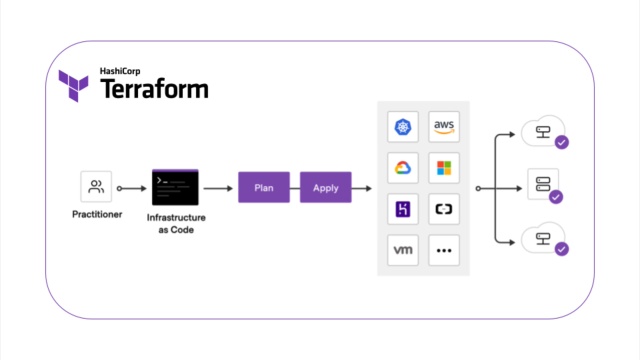Terraform is an infrastructure-as-code (IAC) tool that allows you to define, manage, and provision infrastructure resources in a declarative manner. In this blog post, we'll cover the basics of Terraform, including installation, basic syntax, and essential commands to help you get started.
Installation
Before you begin using Terraform, you need to install it on your local machine. Here's how:
Download Terraform: Visit the Terraform Downloads page and download the appropriate version for your operating system.
Install Terraform: Once downloaded, follow the installation instructions for your OS. For example, on Linux, you might extract the archive and move the binary to a directory included in your
PATH.Verify Installation: Open a terminal and run
terraform --versionto ensure that Terraform is correctly installed and accessible.
Basic Syntax
Terraform uses HashiCorp Configuration Language (HCL) for defining infrastructure configurations. Let's look at the basic syntax components:
1. Providers
A provider is responsible for interacting with a specific cloud or service. Common providers include AWS, Azure, Google Cloud, and more. Here's how you define a provider:
provider "aws" {
region = "us-west-1"
}
2. Resources
Resources are the actual infrastructure components you want to create. They can be virtual machines, databases, networks, etc. Here's a basic example of creating an AWS EC2 instance:
resource "aws_instance" "example_instance" {
ami = "ami-12345678"
instance_type = "t2.micro"
}
3. Variables
Variables allow you to parameterize your configurations. They make your code more reusable and maintainable. Define variables like this:
variable "instance_type" {
description = "EC2 instance type"
default = "t2.micro"
}
4. Outputs
Outputs let you retrieve information from your infrastructure after it's created. For example, getting the public IP of your instance:
output "instance_ip" {
value = aws_instance.example_instance.public_ip
}
Essential Commands
Terraform provides a set of commands to interact with your infrastructure. Here are some essential ones:
terraform init: Initializes a new or existing Terraform configuration, downloading required provider plugins.terraform plan: Creates an execution plan that shows what changes Terraform will make without actually applying those changes.terraform apply: Applies the changes defined in your configuration to the infrastructure.terraform destroy: Destroys all the resources defined in your configuration, effectively terminating your infrastructure.terraform validate: Checks your configuration for syntax errors and potential issues.
Workflow

Initialize: Run
terraform initin your project directory to set up the environment.Configuration: Define your infrastructure using the HCL syntax in
.tffiles.Plan: Execute
terraform planto see the planned changes.Apply: Use
terraform applyto apply the changes to your infrastructure.Destroy: When you're done, execute
terraform destroyto tear down the resources.
Conclusion
Terraform simplifies the process of managing and provisioning infrastructure resources through code. By following this guide, you've learned the basics of installing Terraform, using its syntax, and executing fundamental commands. This is just the tip of the iceberg, as Terraform offers more advanced features and possibilities for managing complex infrastructure setups.
